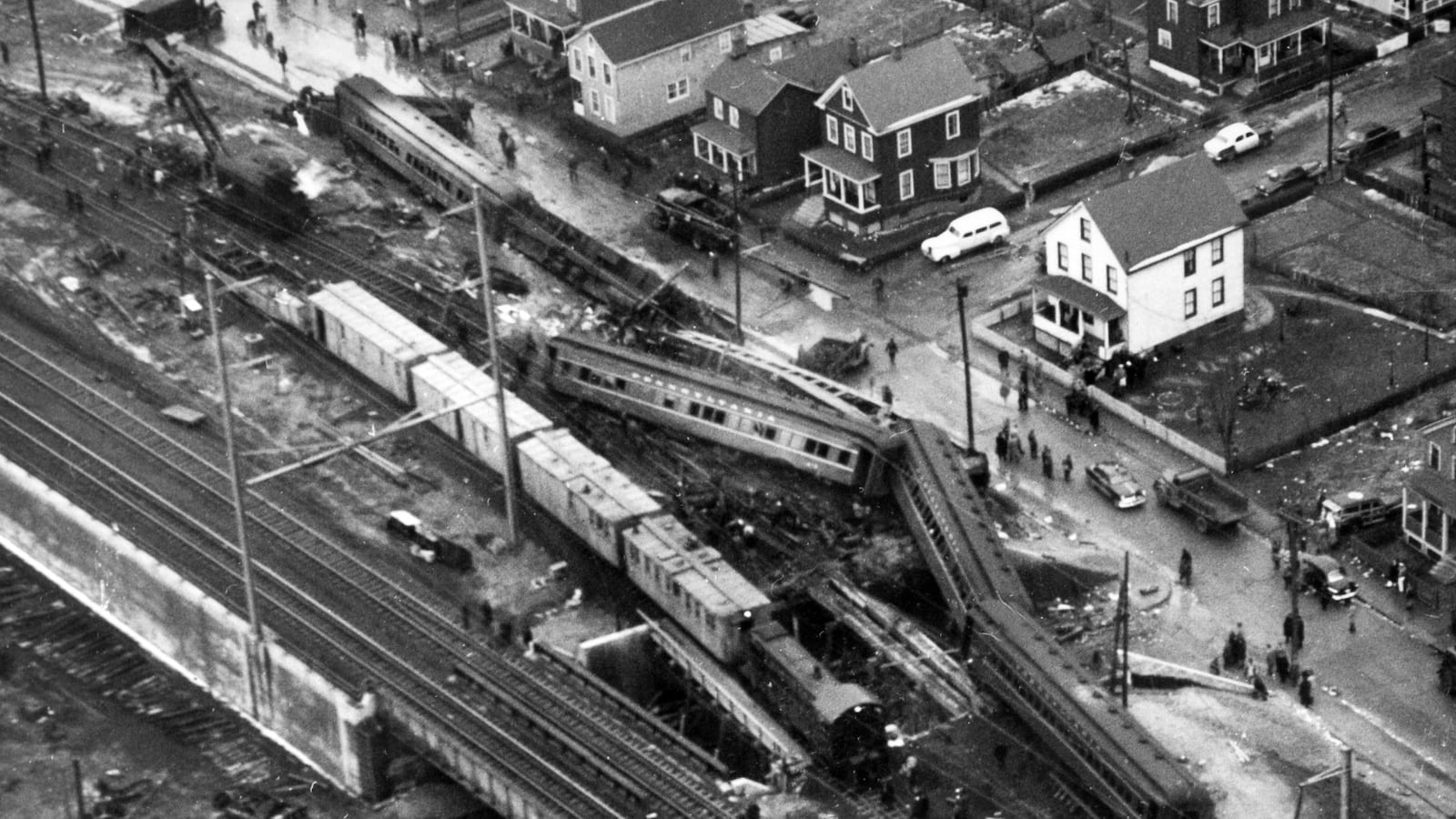A deadly train derailment early Sunday morning in New York cast a shadow over Thanksgiving weekend, killing four and injuring at least 60 others. Thankfully, since the first U.S. train derailment in 1833, with President John Quincy Adams aboard but unscathed, the death tolls have decreased. Here’s a morbid look back at the bloodiest derailments of America’s past.
August 7, 1904: 96 Dead
Eden, Colorado
An express train from Colorado Springs to Pueblo was making its way over Porter Creek Gulch in heavy rains when a flash flood hit the wooden structure and derailed the locomotive. The engine, baggage car, coach, and chair car fell into the creek, claiming 96 lives and leaving only two dozen alive. “With the breaking of daylight this morning the full horror of the scene became apparent,” a local newspaper reported. “Wreckage is visible in all directions, dead bodies being seen here and there in the piles of debris from the cars, driftwood and mud.” It was the deadliest crash Colorado had witnessed at the time, but incredibly, reconstruction of the bridge began immediately. Barely 24 hours later, trains were running the same route over the wreckage below.
November 1, 1918: 102 Dead
Brooklyn, New York
On the last days of World War I, tragedy hit home in New York when an underground rapid transit train sped into a curve, derailing near a tunnel under Malbone Street in Brooklyn, crashing into a concrete partition. In the commuter-filled train, 97 were killed at the site, and five later died of their injuries. At the train’s helm was an inexperienced motorman, filling in for colleagues who had gone on strike that morning. He had taken a bend at 30 mph instead of the 6 mph limit. Miraculously, the motorman was able to walk away unscathed. He was arrested later at his home but was acquitted of charges in 1920. “He does not know how he managed to get out of the wreck, nor how he got home,” The New York Times reported. The crash certainly didn’t help the now-defunct Brooklyn Rapid Transit Company, which went bankrupt a year later. And Malbone Street had such negative connotations it was renamed Empire Boulevard. Decades later, in 1974, a slow-moving train derailed, crashing in the same spot but resulting in no deaths or injuries.
September 6, 1943: 79 Dead
Philadelphia, Pennsylvania
The Congressional Limited, connecting Washington, D.C., to New York City in 3 1/2 hours, was the Pennsylvania Railroad’s fastest train of its time. It was during a wartime Labor Day weekend, when, shortly after passing through North Philadelphia station, flames began shooting from one car’s hot box, causing an axle to snap, forcing the train off its tracks, and flipping it into an overhead signaling frame. Bodies and six of the train’s cars lay scattered across the busy residential area of Frankfort Junction. “The train was just thrown all over the tracks,” a railroad official said at the time. On the train were about 200 servicemen, many of whom aided in the rescue efforts, but the toll was massive. Seventy-nine passengers from two of the train’s 16 cars were killed, and 117 more were injured.
December 16, 1943: 72 Dead
Rennert, North Carolina
Not long after Pennsylvania’s deadly crash, North Carolina suffered similar carnage. Speeding along at 85 mph, a passenger train on the Atlantic Coast Line lost three of its rear cars near Rennert. All would have been fine, but as rescue operations were under way, another train approached from the opposite direction, unaware of the accident. Despite attempts to signal the conductor, the train was unable to stop in time, and it crashed into the derailed cars. Luckily, they had been cleared of passengers, but 72 people on the approaching train, 52 of whom were servicemen going home for the holidays, were killed as the first three cars crashed. A visitor to the site later described “all the rails twisted like pretzels,” and “carnage of track, wreckage, wheels, axles and twisted railroad.”
February 6, 1951, 85 Dead
Woodbridge, New Jersey
Six trains had passed over a newly erected trestle in Woodbridge, N.J., before a Pennsylvania Railroad train called The Broker made its way across, derailing and hurtling down a 20-foot embankment. The track had been opened just five hours earlier to make way for construction of the New Jersey Turnpike, and the train’s cars, filled with commuters returning from New York, were especially full because another line had been shut down due to a strike. Eight of them jumped the tracks, and two crashed all the way to the street below. “The moment my engine passed over the trestle and lurched sharply, I felt the rest of the cars would never make it,” the veteran engineer at the helm told the AP from his hospital cot. Despite his testimony, the cause of the crash was later determined to be due to excessive speed around the track’s curve.






